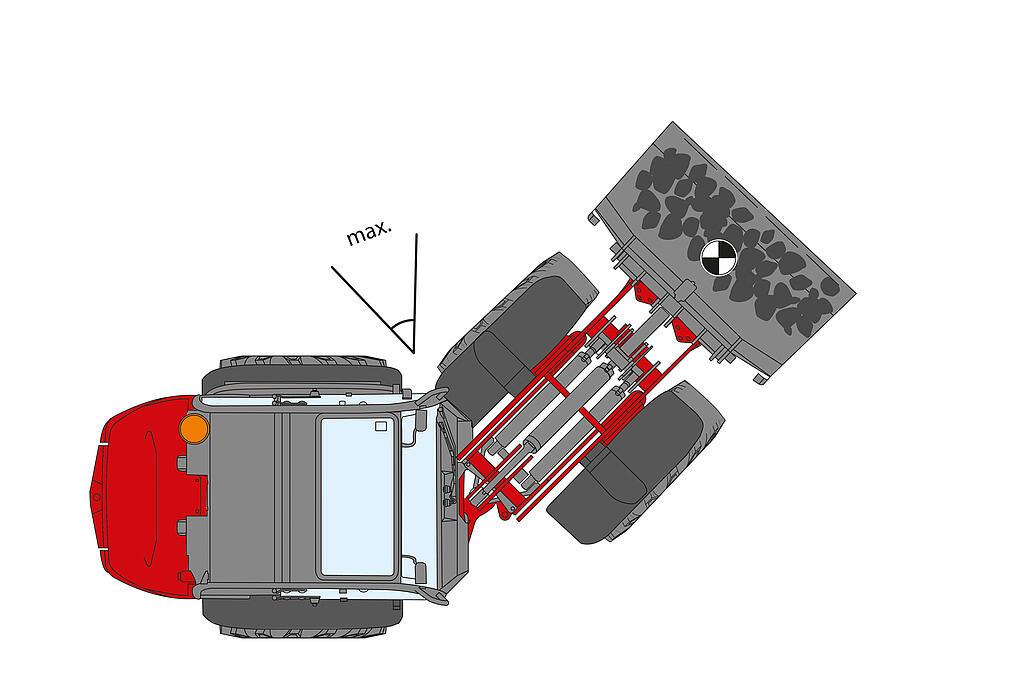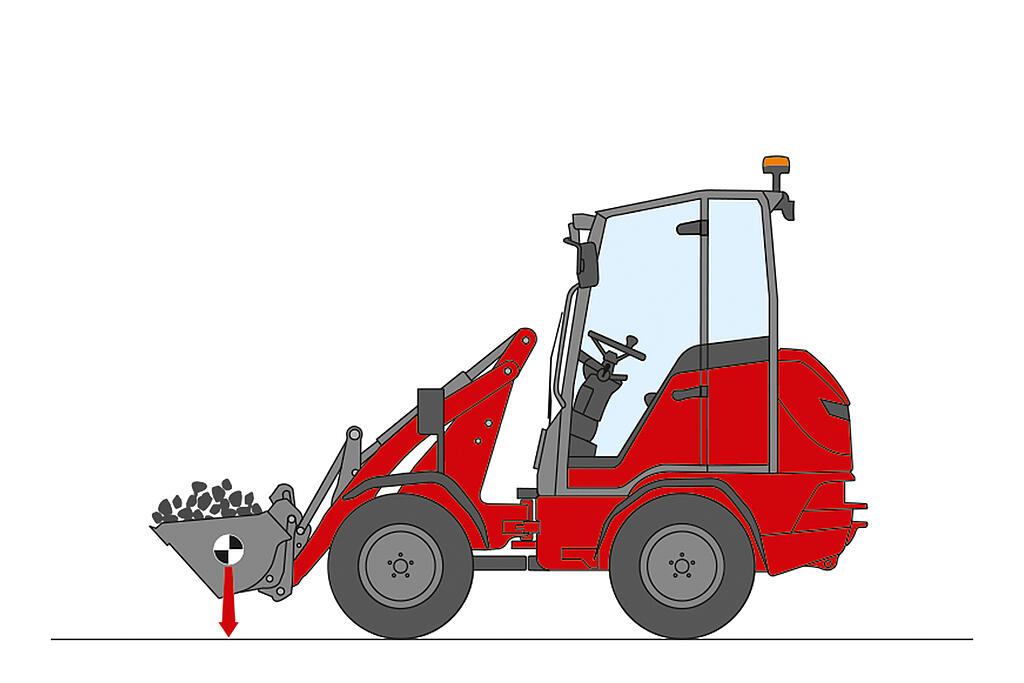1140 Basic Line
| Engine manufacturer | Perkins |
| Motor type | 403 J-11 |
| Cylinder | 3 |
| Drive output | 18.4 kW |
| Drive output | 25 PS |
| At max. rpm | 2,800 U/min |
| Cylinder capacity | 1,131 cm³ |
| Type of coolant | Water |
| Exhaust standard level | V |
| Exhaust aftertreatment | - |
| Operating voltage | 12 V |
| Battery | 77 Ah |
| Alternator | 40 A |
| Operating weight | 1,550 - 1,750 kg |
| Thrust force (max.) | 1,462 daN |
| Lift capacity (max.) | 1,653 daN |
| Tipping load with bucket – machine straight, loading frame horizontal | 670 - 900 kg |
| Tipping load with bucket – machine pivoted, loading frame horizontal | 490 - 690 kg |
| Tipping load with bucket - machine straight, loading frame in lowest position | 1,280 - 1,640 kg |
| Tipping load with bucket - machine pivoted, loading frame in lowest position | 980 - 1,230 kg |
| Tipping load with pallet fork – machine straight, loading frame horizontal | 520 - 670 kg |
| Tipping load with pallet fork – machine pivoted, loading frame horizontal | 390 - 500 kg |
| Tipping load with pallet fork - machine straight, transport position | 760 - 950 kg |
| Tipping load with pallet fork - machine pivoted, transport position | 560 - 710 kg |
| Driver's cab | FSD (eps) |
| Tank capacity for fuel | 21 l |
| Tank capacity for hydraulic oil | 18 l |
| Type of drive | Hydraulic (hydrostatic) |
| Drive unit | oil engine |
| Speed levels | 1 |
| Axle | K75 |
| Travel speed Standard | 0-12 km/h |
| Travel speed Option 1 | 0-13 km/h |
| Operating brake | Transmission drum brake |
| Parking brake | Service and parking brake in the drive train |
| Drive hydraulics working pressure (max.) | 215 (305) bar |
| Work hydraulics discharge volume (max.) | 30,8 l/min |
| Work hydraulics working pressure (max.) | 205 bar |
| Kinematics type | P |
| Lifting cylinder | 2 |
| Tipping cylinder | 1 |
| Quick change system | Mechanical (hydraulically activated) |
| Steering type | hydraulically activated articulated pendulum steering |
| Steering cylinder | 1 |
| Oscillating angle | ± 12 degree |
| Average sound power level LwA (operator's canopy) | 99.6 dB(A) |
| Guaranteed sound power level LwA (operator's canopy) | 101 dB(A) |
| Specified sound pressure level LpA (operator's canopy) | 86 dB(A) |
|
FSD = operator's canopy Tipping load calculation pursuant to ISO 14397 |
When comparing tipping loads and lift capacities from different manufacturers, make sure that they have been determined in accordance with the ISO 14397-1 and 2 standards!
General Information
Attention: The tipping load changes depending on the various equipment features of a machine (e.g. operator’s platform/cab, rear weight, engine, tires, etc.). The net weight of the various attachments naturally also plays a role here.
Important to note
Good to know: Tipping loads determined in the buckled state are highly dependent on the buckling angle of the machine. Weidemann determines these values in the fully folded state. When comparing with other manufacturers, please note the kink angle used!
When comparing tipping loads and lift capacities from different manufacturers, make sure that they have been determined in accordance with the ISO 14397-1 and 2 standards!
General Information
Attention: The tipping load changes depending on the various equipment features of a machine (e.g. operator’s platform/cab, rear weight, engine, tires, etc.). The net weight of the various attachments naturally also plays a role here.
Important to note
Good to know: Tipping loads determined in the buckled state are highly dependent on the buckling angle of the machine. Weidemann determines these values in the fully folded state. When comparing with other manufacturers, please note the kink angle used!

|
|
The maximum lift capacity in the bucket’s center of gravity is measured by Weidemann as follows:

|
|
The maximum tear out force on the below bucket edge is measured by Weidemann according to the standard ISO 14397-2, this means:

|
|
The maximum load weight of a machine is known as the tipping load. This is achieved when the rear wheels of the machine lose contact with the ground. The tipping load is measured by Weidemann according to the standard ISO 14397-1, this means:


|
|
The maximum load weight of a machine is known as the tipping load. This is achieved when the rear wheels of the machine lose contact with the ground. The tipping load in lowest position is measured by Weidemann as follows:


|
|
The maximum load weight of a machine is known as the tipping load. This is achieved when the rear wheels of the machine lose contact with the ground. The tipping load is measured by Weidemann according to the standard ISO 14397-1, this means:


|
|
The maximum load weight of a machine is known as the tipping load. This is achieved when the rear wheels of the machine lose contact with the ground. The tipping load in transport position is measured by Weidemann as follows:


|